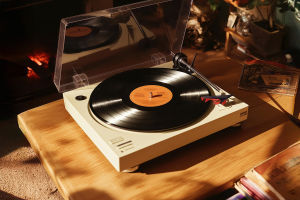
Vintage classical music is more than just a genre; it’s a reflection of historical movements, emotional depth, and technical mastery that has shaped the course of music for centuries.
From the intricate fugues of the Baroque to the lush orchestrations of the Romantic era, classical music offers a rich, immersive experience.
Exploring specific works from these periods allows listeners to appreciate the nuances of musical evolution and cultural shifts. Let’s take deeper into these remarkable pieces and the composers who crafted them!
The Baroque Era: Precision and Ornamentation
The Baroque period (1600-1750) is known for its elaborate musical structures, emotional intensity, and technical complexity. Composers like Johann Sebastian Bach and Antonio Vivaldi transformed music by introducing the concept of contrast, using dynamics, tempo, and texture to evoke powerful emotions.
One of Bach's most famous works, the Brandenburg Concertos, is a perfect example of Baroque brilliance. The concertos blend virtuoso solo instruments with an intricate orchestral backdrop, showcasing Bach’s mastery of counterpoint and his ability to balance complexity with harmony. Another key work from this period is Vivaldi’s The Four Seasons. This violin concerto captures the essence of each season through musical imagery—Vivaldi’s vivid portrayal of nature and emotion is still incredibly relevant today.
The Classical Era: Structure and Balance
The Classical era (1750-1820) brought a shift toward clarity, order, and balanced musical structures. While composers like Mozart and Haydn introduced new forms like the symphony and string quartet, they maintained emotional depth and nuance through precise melodic and harmonic development.
Mozart's Piano Concerto No. 21 in C Major is a quintessential piece from the Classical period. Known for its lyrical second movement, this concerto beautifully demonstrates Mozart’s ability to create emotive yet structurally refined music.
Similarly, Joseph Haydn’s String Quartet Op. 33 No. 2 ("The Joke") offers a glimpse into the composer’s witty and inventive style, full of playful rhythmic surprises and dynamic contrasts. These pieces highlight the Classical era's emphasis on symmetry, elegant forms, and clarity of expression.
The Romantic Era: Passion and Individuality
The Romantic period (1800-1910) was marked by an expansion of emotional expression, with composers pushing the boundaries of orchestration and form to convey a range of human experiences.
Beethoven’s Symphony No. 9 is a defining work of this era, combining monumental scale with an intensely personal sense of triumph and struggle. The fourth movement, featuring Friedrich Schiller’s Ode to Joy, is one of the most celebrated moments in the classical canon, representing a vision of universal brotherhood and optimism.
Another key figure of the Romantic period, Pyotr Ilyich Tchaikovsky, captured the depths of human emotion in works like Swan Lake and The Nutcracker. In Swan Lake, Tchaikovsky's use of recurring themes for characters and his rich orchestration paint vivid emotional landscapes, from the tragic to the transcendent. Similarly, his Piano Concerto No. 1 is a work that exemplifies both lyrical beauty and boldness, known for its dramatic opening and heart-wrenching second movement.
Rediscovery and Preservation: Vintage Classical in the Modern World
Vintage classical music remains incredibly influential, with modern performances and recordings continuing to highlight its timeless appeal. The rise of digital platforms like Spotify, Apple Music, and YouTube has made these historic works more accessible than ever.
Notably, high-definition recordings of legendary conductors, such as Herbert von Karajan’s interpretations of Beethoven's symphonies or Leonard Bernstein’s passionate renditions of Mahler’s works, preserve the vivid textures and emotions of these masterpieces.
Vintage classical music’s relevance today is undeniable. These masterpieces provide a connection to the past, offering modern listeners an immersive journey through historical periods and artistic innovations. Whether it’s Bach’s Brandenburg Concertos that showcase Baroque intricacy or Tchaikovsky’s Swan Lake that captures the passion of the Romantic era, classical music continues to offer an unmatched level of emotional depth and intellectual engagement.
In 2025, as the world celebrates these timeless works, vintage classical music remains a powerful reminder of the beauty and complexity of human creativity.


